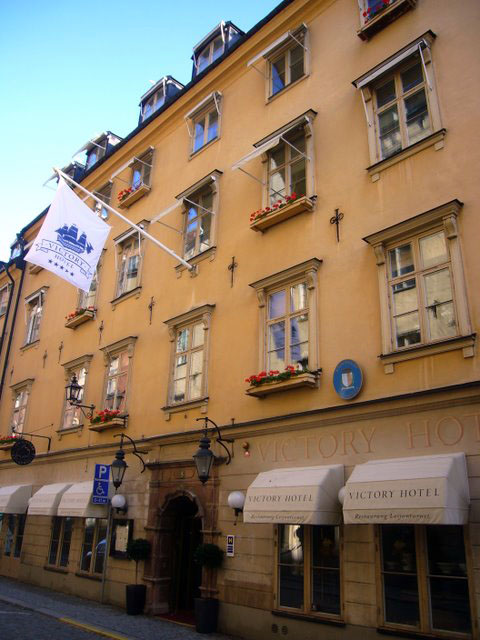The Discovery of Sweden’s Largest Treasure
|
In October 1937 two construction workers, Westerberg and Karlsson, were doing repair work in a former potato shop at Lilla Nygatan 5 in Gamla Stan, Stockholm. As they broke through an old concrete floor in the basement of the shop they discovered an immense hoard of silver coins and silver pieces hidden below the floor.
In all over 18,000 silver coins, and 85 silver articles such as spoons, jugs, candlesticks and bowls (see photos below) were found. Everything was hidden in three copper vessels, buried long ago. The hoard of coins consisted almost entirely of silver marks of various denominations, and some courant and ore pieces for the period 1738–1741 when production of the mark was suspended. The latest coins were dated 1741 and the earliest from the early 17th century. The total weight of silver was 205 Kg and the value of the treasure would be worth fifteen million US dollars (100 million SEK) today. The treasure can be viewed at Ekomomiska museet in Stockholm.
The Lohe Family In the 1740s, the house at Lilla Nygatan 5 was owned by the Noble family Lohe. In 1686 Johan Lohe bought Hälleforsnäs mill from Börje Cronberg and two years later incorporated Ströms Bruk in what would be a large works empire. He also took sugar refineries, iron works, a trading house, shipping company and banks. Johan Lohe died 1704 in Stockholm, and is buried in the Lohe family grave in Fors church in Eskilstuna. His wife Anna Blume, who survived him by 27 years, died on 23 January 1731. After his death she managed the family’s enormous wealth and purchased a house on Lilla Nygatan 5 in the old town where she dwelt together with two of her unmarried children; Adolf Tobias (born 1683) and Johanna (born 1690). The sole male heir to the Lohe family fortune was Conrad Anton Lohe, born in 1685 and who died in 1763. Conrad married the 25 years younger Beata Skeckta, who was of the same evil character as her husband. Dishonesty, avarice, greed and incessant processes, to get someone to face trial, were the only things that could please them. Their only son, who lived in poverty, is said to have drunk himself to death at a young age at Uppsala University2. It is not known for certain who hid the Lohe treasure but it would seem that this must have been Adolf Tobias Lohe, possibly together with his younger sister Johanna. Anna Lohe who had bought the house died in 1731, but her two children lived on there until they died in 1759. Lilla Nygatan 5 is now the Victory Hotel. The name commemorates Admiral Lord Nelson’s flagship Victory rather than the treasure found in the cellar, the owner of the hotel being an admirer and enthusiast of Lord Nelson, the British Admiral who defeated the combined Spanish and French fleets at the battle of Trafalgar in 1805.
Notes: Sources: |






